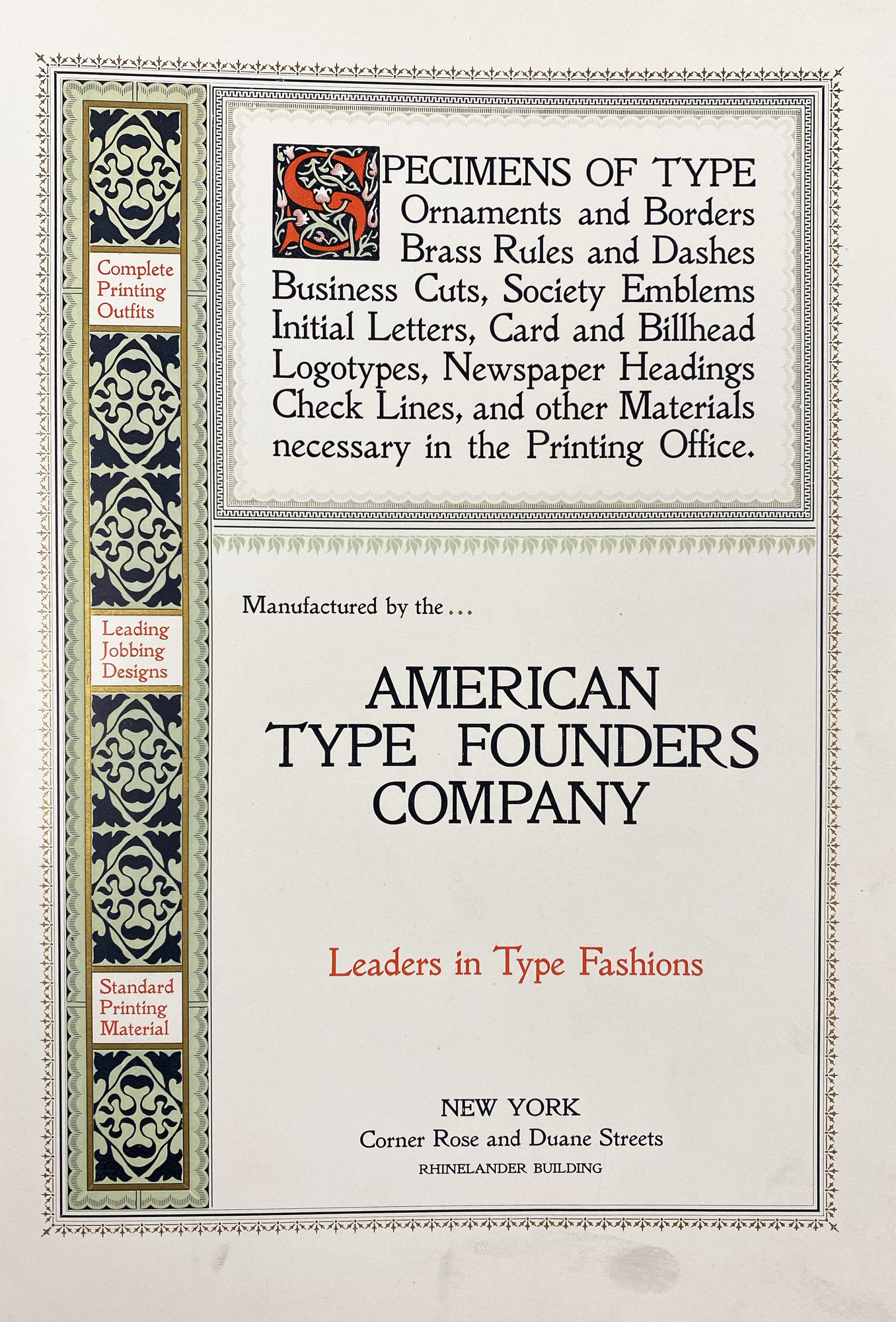Typography Specimen Books
Click each image to view additional photos
SCUA holds a variety of typography and printing history materials, thanks in large part to generous donations from Dick Yale, a printer who ran his own printing museum in San Diego’s Old Town neighborhood, and Laura Sword, whose parents, Donna and Regis Graden, amassed an extensive collection around a lifelong shared love of printing and Regis’ own Nut Quad Press.
Type specimen books are among the many types of publications included in this collecting area. Specimen books are a centuries-old industry standard through which type foundries and printers share the range of typefaces, ornaments, borders and other printing options available to clients. These publications draw attention to their ability to print attractive and attention-grabbing material for the publishing and advertising industries, among others. One such company was the American Type Founders, founded in 1892 as a merger of 23 individual foundries. ATF was responsible for upwards of 85% of all type manufactured in the US through the early 1940s, and published massive specimen catalogues. The catalogue to the left is from 1896, the earliest of several held in SCUA. Also seen here is a 1924 specimen book of Hebrew and Yiddish type from typographer H. Berthold in Berlin, as well as a folio-sized book of large wood type specimens from the Hamilton Company, pre-eminent manufacturers of wood type in the late 19th and early 20th centuries.
Some of the more creative specimen books display printing on a variety of paper samples with experimental layout options and folding inserts throughout, or appear as experimental magazines and other such publications. In 1948, Swiss designers Walter Bangerter and Walter Marti published Typographie, a spiral-bound sampling of typographical options for letterhead, business cards, brochures and other promotional materials. Renowned typographer Herbert Spencer founded the magazine Typographica in 1949, and it ran until 1967. Although not intended for profit, Spencer spared no expense, and the magazine featured paper samples, letterpress, and tip-ins presenting a variety of topics, from Braille and locomotive lettering to sex and avant-garde poetry. Underware is a contemporary collaborative European type design firm that publishes unique zine-like specimen booklets of their typefaces, numerous of which were donated to SCUA by Graphic Design Professor Emeritus Susan Merritt. Individual typographers also produce specimen books of their own type designs to showcase to colleagues and serve as instructive manuals for students. One such example is 20th century German typeface designer Hermann Zapf’s Manuale Typographicum. Known for Zapfino, Palatino and Optima, Zapf worked and taught from the 1930s until well into the digital era and across genres and styles, becoming a leading influence on modern type design.






